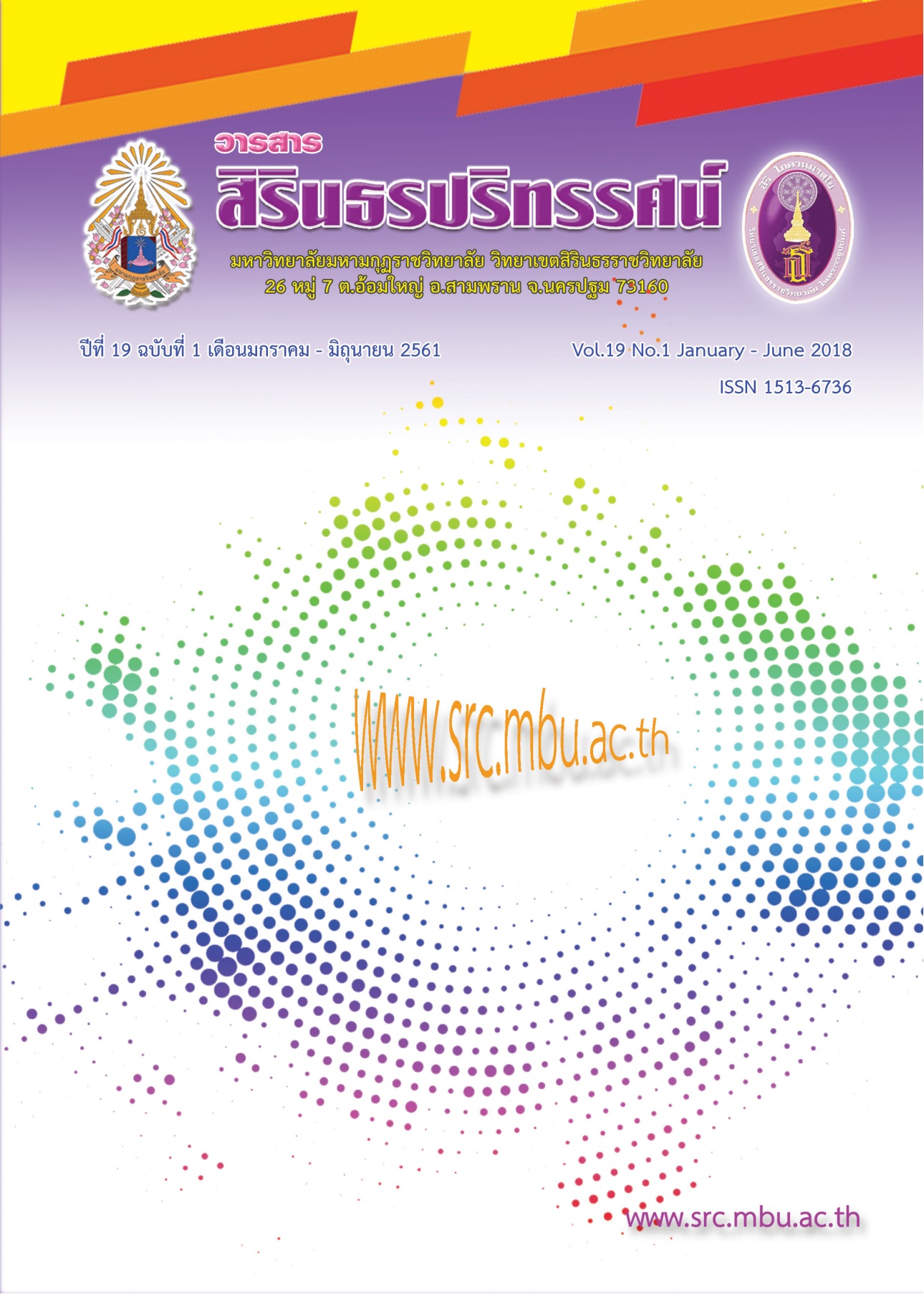Study the behavior of the meditator according to the attitudes
Keywords:
behavioral education, dharma practitioner, attitudinal attitudes 4Abstract
This research is aimed at 4. Study the factors that affect the behavior of the meditator according to the rhythmic pattern and to present the causal models that affect the behavior of the meditators 4, the results showed that: 1. the influence of personal factors. The influence of personal factors, such as the status of the practitioners and the level of education. At the p-value <0.05 level, the behavior was significantly Effects on behavioral status and age range 41-50 years 2. Analyzing the influence of the original mental factors, i.e, and the self-esteem. Emotional Stability Self-efficacy and perceived performance status. Significant effects on behavior at p-value <0.05. 3. Multiple Logistic Regression analysis to determine whether coefficients of independent variables affect behavioral variables and cognitive processes
References
2.นำชัย ศุภฤกษ์ชัยสกุล. (2552). การวิเคราะห์ Logistic Regression. กรุงเทพฯ : สถาบันวิจัยพฤติกรรมศาสตร์ มหาวิทยาลัยศรีนครินทรวิโรฒ.
3.พระพรหมคุณาภรณ์ (ป.อ. ปยุตฺโต). (2557). พุทธธรรม ฉบับปรับขยาย. พิมพ์ครั้งที่ 40. กรุงเทพฯ : มูลนิธิธรรมทานกุศลจิต.
4.ภัทรนิธิ วิสุทธิศักดิ์. (2555). “รูปแบบผสมผสานการปฏิบัติวิปัสสนากรรมฐานตามหลักสติปัฏฐาน,”.วิทยานิพนธ์พุทธศาสตรดุษฎีบัณฑิต, สาขาพุทธศาสนา. บัณฑิตวิทยาลัย : มหาวิทยาลัยมหาจุฬาลงกรณราชวิทยาลัย.
5.มหาจุฬาลงกรณราชวิทยาลัย. (2539.) พระไตรปิฎกภาษาไทย ฉบับมหาจุฬาลงกรณราชวิทยาลัย. กรุงเทพฯ : โรงพิมพ์มหาจุฬาลงกรณราชวิทยาลัย.
6.อัษฏางค์ สุวรรณมิสสวะ. (2551). “วิจัยเรื่อง ศึกษาไตรลักษณ์ในการปฏิบัติวิปัสสนาตามหลักสติปัฏฐาน 4 เฉพาะกรณี การปฏิบัติวิปัสสนาภาวนา 7 เดือน”. วิทยานิพนธ์พุทธศาสตรมหาบัณฑิต. บัณฑิตวิทยาลัย : มหาวิทยาลัยมหาจุฬาลงกรณราชวิทยาลัย.
7.Bandura, A. (1986). Fearful expectations and avoidant actions as confects of perceived self-inefficacy. American Psychologist.
8.Bandura Albert. (1986). Social foundations of thought and action: A social cognitive theory. New Jersey: Englewood cliffs, Prentice-hall.
9.Bandura, A. (1977). Self- efficacy: Toward a unifying theory of behavioral change. Psychological Re- view.
10.Chandradhar Sharma. (1964). A Critical survey of Indian philosophy. varanasi : motilal Banarsidass.
11.Cornbrash. Lee. J (1963). Educational Psychology. New York: Harcourt, Brace and World.
12.Coppersmith, S. (1981). The Antecedents of Self-esteem. California: Consultation Psychologists Press, Inc.
13.Doungkamon Tongkanaraksa. (2553). “Suitable Buddhist Meditation Retreats for Foreigners in Thailand”. Master of Art Buddhist Studies, Graduate School: chulalongkornrajavidyalaya University.
14.Phra Mahasi Sayadaw. (2016). Advices in Fundamental Insight Meditation. Bangkok: Canna Graphic Printing.
15.Piaget, J. And Inhaled, B. (1964). The Growth of Logic: from Childhood to Adolescence. New York: Basic Hall.
Downloads
Published
Issue
Section
License
บทความที่ได้รับการตีพิมพ์เป็นลิขสิทธิ์ของ มหาวิทยาลัยมหามกุฏราชวิทยาลัย วิทยาเขตสิรินธรราชวิทยาลัย
ข้อความที่ปรากฏในบทความแต่ละเรื่องในวารสารวิชาการเล่มนี้เป็นความคิดเห็นส่วนตัวของผู้เขียนแต่ละท่านไม่เกี่ยวข้องกับหาวิทยาลัยมหามกุฏราชวิทยาลัย วิทยาเขตสิรินธรราชวิทยาลัย และคณาจารย์ท่านอื่นๆในมหาวิทยาลัยฯ แต่อย่างใด ความรับผิดชอบองค์ประกอบทั้งหมดของบทความแต่ละเรื่องเป็นของผู้เขียนแต่ละท่าน หากมีความผิดพลาดใดๆ ผู้เขียนแต่ละท่านจะรับผิดชอบบทความของตนเองแต่ผู้เดียว




